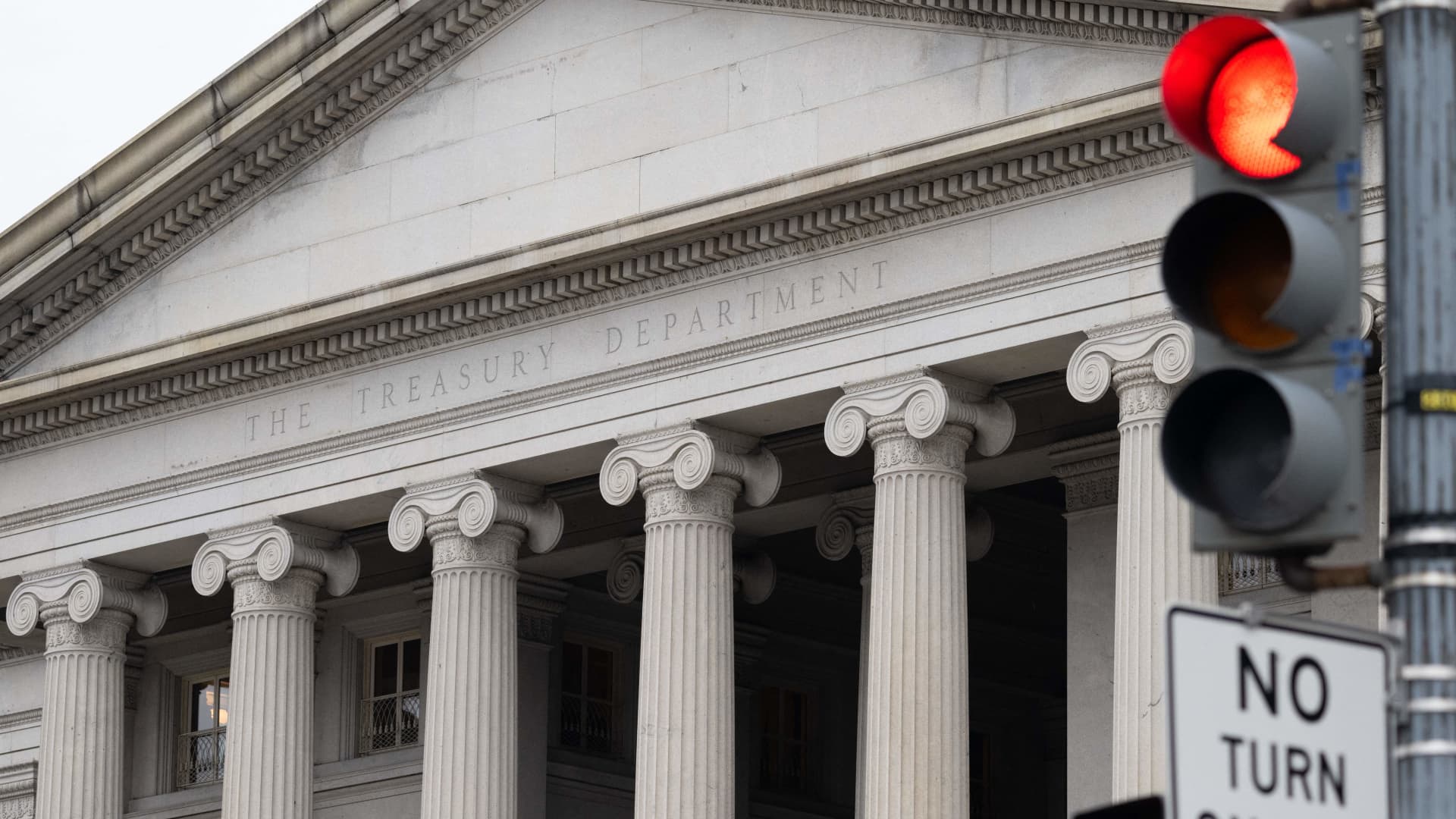The US Treasury Department constructing is seen in Washington, DC, January 19, 2023.
Saul Loeb | Afp | Getty Images
WASHINGTON — The June 1 “X date” is approaching, the earliest the U.S. authorities might run out of cash to pay its bills if leaders don’t attain a deal to raise the debt restrict.
After that date, the Treasury can have to determine which obligations do not receives a commission, even as a number of crucial bills are due.
Lifting the debt ceiling is critical for the authorities to cowl spending commitments already permitted by Congress and the president — and stop default. Doing so doesn’t authorize new spending. President Joe Biden is at present in a standoff with House Speaker Kevin McCarthy, who has refused to elevate the debt restrict if Biden and lawmakers don’t agree to future spending cuts. McCarthy said he hopes the House will vote on a debt restrict invoice as quickly as subsequent week.
The suppose tank Bipartisan Policy Center modeled the Treasury Department’s money circulate, noting what day bills are paid. The schedule provides a take a look at the government’s spending priorities as it approaches June 1.
The Treasury has taken extraordinary steps to hold paying the government’s bills, and expects to have the option to avoid a first-ever default a minimum of till early June. Treasury Secretary Janet Yellen demurred when requested in an interview with CNBC this month what bills could be prioritized in the occasion of a default.
Here’s a take a look at the bills that come due in the first half of June, in accordance to evaluation from the Bipartisan Policy Center based mostly on every day and month-to-month Treasury statements. Only the main spending classes are outlined, which means the numbers could not add up to the whole spending due that day.
June 1: $101 billion in spending due; estimated $26 billion in income
- Medicare: $47 billion
- Veterans advantages: $12 billion
- Military pay and retirement: $10 billion
- Civil service retirement: $6 billion
June 2: $40 billion in spending; $18 billion in income
- Social Security advantages: $25 billion
- Medicaid: $2 billion
- Education packages: $1 billion
June 5: $13 billion in spending; $33 billion in income
- Medicare: $1 billion
- SNAP advantages: $1 billion
- Defense vendor funds: $1 billion
June 6: $17 billion in spending; $15 billion in income
- Medicaid: $6 billion
- Defense vendor funds: $2 billion
- Education packages: $1 billion
June 7: $16 billion in spending; $18 billion in income
- Defense vendor funds: $2 billion
- Transportation packages: $1 billion
- Individual tax refunds: $1 billion
June 8: $18 billion in spending; $13 billion in income
- Medicaid: $6 billion
- Defense vendor funds: $2 billion
- Education packages: $1 billion
June 9: $21 billion in spending; $18 billion in income
- Federal salaries and insurance coverage: $5 billion
- Medicaid: $5 billion
- Education packages: $1 billion
June 12: $23 billion in spending; $33 billion in income
- Pension Benefit Guaranty Corporation: $7 billion
- Federal salaries: $2 billion
- SNAP advantages: $1 billion
June 13: $15 billion in spending; $15 billion in income
- Defense vendor funds: $3 billion
- Medicaid: $2 billion
- Medicare: $1 billion
June 14: $38 billion in spending; $37 billion in income
- Social Security advantages: $25 billion
- Individual tax refunds: $1 billion
- Medicaid: $1 billion
June 15: $22 billion in spending; $79 billion in income (quarterly tax receipts are due)
- Military salaries: $4 billion
- Medicaid: $3 billion
- Interest on public debt: $2 billion
June 16: $12 billion in spending; $29 billion in income
- Medicare: $2 billion
- Medicaid: $1 billion
- Defense vendor funds: $1 billion


